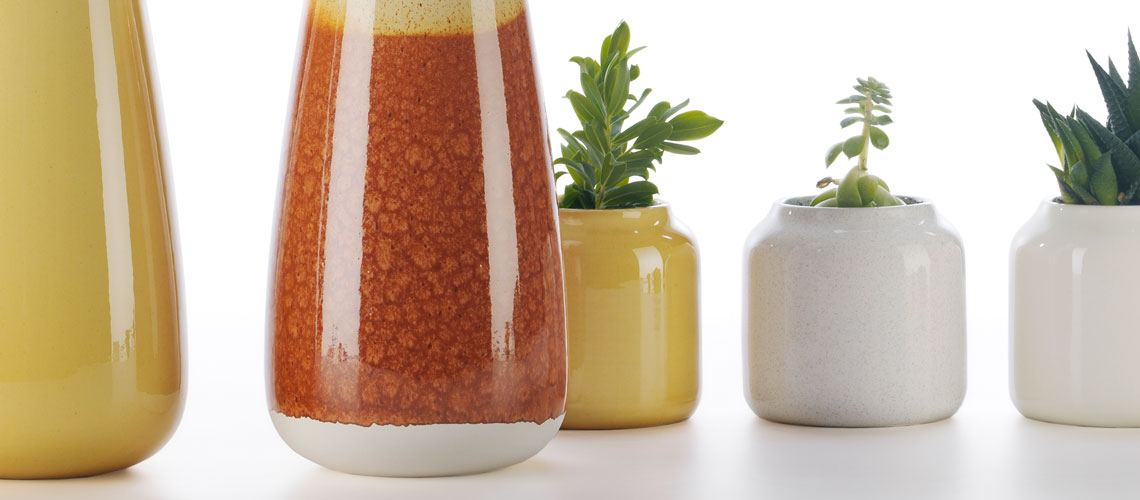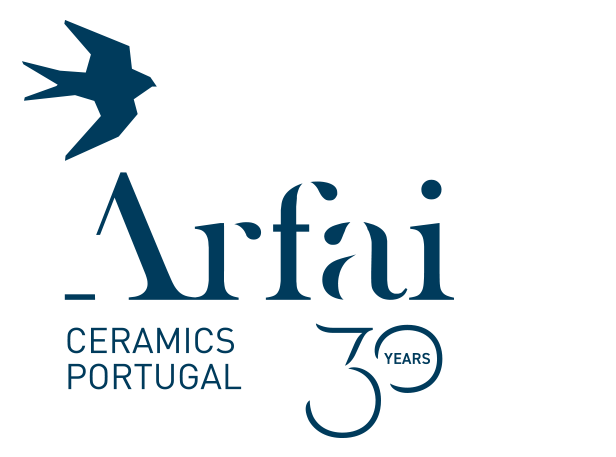
“Are you Ceramics manufacturers? So, do you produce tableware? Tiles?” Working as ceramics manufacturers for more than 20 years, we are often confronted with great confusion when defining what is ceramics and what does this material allow us to create. Ceramics is a big family, gathering many types and kinds of clay: earthenware, stoneware, terracotta, and porcelain are just some of the most popular ones. They are all ceramics, but they are all different from each other, having its own characteristics, particularities, and proper production processes.
For once, we have clarified what are ceramics, identifying what distinguishes our earthenware from others types of clay as stoneware or porcelain.
FIRST WHAT’S FIRST: DEFINING CERAMICS
With its origin in the Greek word ‘Keramos’, “potter’s clay”, ceramics refers to the art of producing artistic, utilitarian or decorative objects, using clay as a raw material, in a process where clay is firstly molded and then fired at high temperatures, to gain resistance, hardness, and color. So, summing up: objects made of clay, a mineral substance that may be found in the earth.
As a result of countless geological formations, there are clays of various chemical compositions and physical appearances, but most of them are not, in principle, ready to be manufactured – they are instead a basis to create what we may call as a ‘workable’ clay body, by making some additions and adjustments in its composition.
Giving a simple explanation, one could say that a ‘workable’ clay body is a substance obtained by blending plastic raw materials, as kaolin, and non-plastic ones, as feldspar or quartz, which make clay a plastic material when wet, and hard and rocklike when fired.
Different clay basis, different additions. And this is when ceramics start offering different directions: sharing the same ‘clay’ basis, earthenware, stoneware, and porcelain will vary, first, in the composition and then in the way they are processed/manufactured. Variables that will finally influence the characteristics of ceramics as a finished item, making them more or less suitable for each possible purpose.

PORCELAIN, WHITE PURITY
A pure white clay, translucent and non-plastic by nature. Porcelain is perhaps the apple of “ceramics’ eyes”: noble, slim, but dense and impervious, approaching the characteristics of glass. To be ‘workable’, some plastic components are added, but as they darken and jeopardize the pure white characteristic of porcelain, a compromise is made in order to find whiteness while achieving a workable clay.
In terms of production process, as high-fire clay, porcelain is fired at an average temperature of 1300°C and is usually glazed with no-color glazes, as the intention is always to protect the ‘natural’ white translucency of this clay.
Although decorative porcelain may be found, porcelain is perfect for long-lasting tableware: it has it all when it comes to appearance, quality, and utility. One same tableware set may be kept across generations, preserving its initial characteristics.
STONEWARE, ROCKLIKE STYLE
As porcelain, stoneware is a high-fire clay but unlike the first one, it is a plastic material by nature. As the name suggests, stoneware is a hard, fairly dense and impervious, presenting a grey/buff color.
Glazes usually offer a rock-like appearance in color and texture, emphasizing the earthy origins of this clay and distinguishing it clearly from porcelain and earthenware (although, in many situations, this distinction is not easy to make). Generally, it is quite hard or traditionally impossible to explore “character” in these glazes: although strong colors may be achieved, they are not so vibrant as the low-fire glazes, used for earthenware. In its turn, due to the high-firing temperatures, these glazes experience high fusibility during the fire and so they can offer unique reactions.
A whole set of characteristics that makes stoneware an ideal solution for utilitarian purposes, as, once again, tableware: mostly due to its lack of porosity, it ensures high resistance to daily washing needs. At the same time, these earthy properties explain why stoneware has been so ‘fashionable’ even for decorative purposes – it is naturally organic, which fits perfectly the nature-inspired trends, that have been marking previous seasons.
EARTHENWARE, INFINITE COLOR, ENDLESS OPTIONS
Earthenware is a porous low-fire clay, that is waterproofed when glazed. More fragile than porcelain and stoneware, once porosity makes it more likely to absorb water and so to rot and break, it is not so brittle.
Specifically designated as faience, it presents a greenish-grey color in the raw state. Perhaps, less special/noble than porcelain, and less “useful” than stoneware for being lighter and porous, earthenware biggest strength and distinctive factor relies in the rich and endless number of decorations and finishes that may be applied: vibrant colors, glossy/matte finishes, holographic or metallic lusters, and so much more.
Earthenware is, without doubt, the one clay as long as aesthetics is concerned, what makes it the election material when the goal is decorative. With the countless number of glazes, combinations and application techniques, an earthenware piece may approach the whiteness of porcelain, and the earthy/organic look of stoneware glazes.

CONCLUSION: THE BEST CLAY DEPENDS ON YOUR GOAL
Among all the differences and similarities, one may say that there is no such thing as good-quality clays or bad ones. Instead, there are clays that better suit each one needs and goals.
Want a lasting and forever-in style tableware set? So, porcelain will be perhaps your best option. Or do you want something earthy, organic and waterproof? Stoneware, then. Or are you looking for decorative items with very specific color or appearances? Try earthenware. In this last one, Arfai is at your disposal – bring us your project we’ll male it real.

